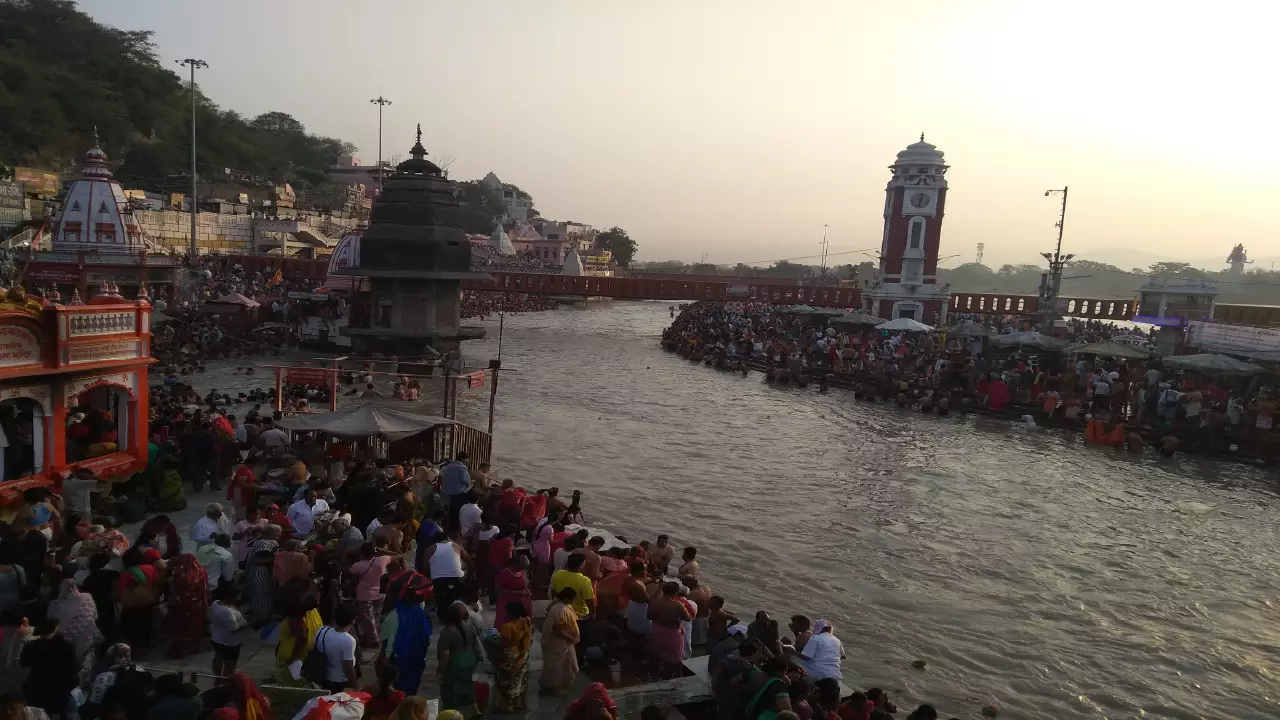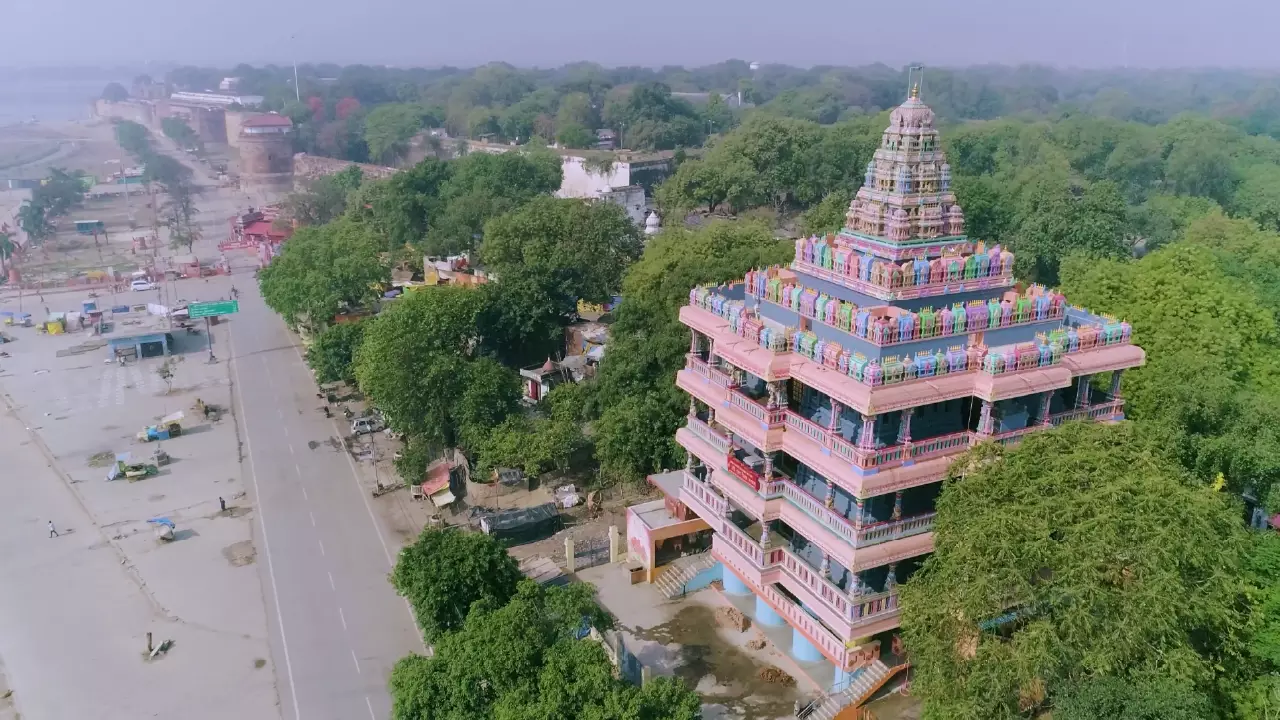The 4 Holy Cities of the Kumbh: Nashik, Prayagraj, Haridwar & Ujjain Explained
These four cities—Nashik, Prayagraj, Haridwar, and Ujjain—are the earthly stages for a divine drama that repeats itself across the ages: the Kumbh Mela.
single myth, each city has its own unique spiritual vibration, its own distinct flavor of devotion. They are like four great rivers, all flowing from the same celestial source, but each carving its own sacred path.
The Single Myth That Binds Them All
Every story has a beginning, and the story of the Kumbh Mela begins in the heavens. As our ancient Puranas tell us, it all started with the Samudra Manthan, the Churning of the Ocean of Milk. The Devas (gods) and the Asuras (demons), in a rare and temporary alliance, churned the cosmic ocean to obtain the Amrit, the nectar of immortality.
When the divine physician Dhanvantari finally emerged with the Kumbh, or pot of nectar, the truce was shattered. A great struggle for possession began. To protect the elixir, the gods took flight, and a chase ensued across the cosmos for twelve divine days and nights—which, for us mortals, is equivalent to twelve years.
During this celestial pursuit, it is said that four precious drops of the immortal nectar fell from the pot and landed on Earth. These four drops sanctified the ground at four specific locations, transforming them into powerful centers of spiritual energy. These are the four holy cities where we now gather: Prayagraj, Haridwar, Ujjain, and Nashik.
A Celestial Compass: The Role of the Stars

The timing of the Mela at each site is not a matter of human choice. It is a divine appointment, dictated by a celestial compass. Vedic astrology, or Jyotisha, tells us precisely when the waters of the sacred rivers are charged with the essence of that original Amrit. The great planet Jupiter, whom we call Guru, makes a twelve-year journey through the zodiac. His position, along with that of the Sun, acts as a cosmic clock, pointing to the next sacred location for the gathering.
Now, let us journey to each of these sacred abodes.
The Four Sacred Abodes of the Kumbh
Of course. To see the essence of these four sacred abodes side-by-side can bring great clarity. It is like looking at four different maps that all lead to the same divine destination.
Here is a table that lays out the unique characteristics of each holy city of the Kumbh Mela.
The Four Sacred Cities of the Kumbh Mela at a Glance
| Holy City | Sacred River | Astrological Alignment (The Kumbha Yoga) | Unique Spiritual Significance & Nickname |
| Prayagraj (Allahabad) | Triveni Sangam (Confluence of Ganga, Yamuna, & the mythical Saraswati) | Jupiter in Aries or Taurus; Sun & Moon in Capricorn | Tirtha Raja (King of all Pilgrimages). The supreme confluence. Holiest and largest of the four Melas. |
| Haridwar | Ganga | Jupiter in Aquarius; Sun in Aries | Gangadvara (Gateway to the Ganga). Where the holy river descends from the Himalayas to the plains. Represents pure, descending power. |
| Ujjain | Kshipra | Jupiter in Leo; Sun in Aries | Known as Simhastha. A great center of Shaivism, being the abode of the Mahakaleshwar Jyotirlinga. The energy is mystical and timeless. |
| Nashik (with Trimbakeshwar) | Godavari | Jupiter and Sun both in Leo | Also known as Simhastha. Deeply connected to Lord Rama’s exile (Ramkund). Offers a unique duality of Vaishnava (Nashik) and Shaiva (Trimbakeshwar) traditions. |
1. Prayagraj: The King of All Pilgrimages
Of all the four sites, Prayagraj (formerly Allahabad) is revered as the Tirtha Raja, the King of all Pilgrimage Centers. Its power lies in its unparalleled sacred geography.
-
The Sacred Confluence (Triveni Sangam): Prayagraj is situated at the Triveni Sangam, the confluence of three of the holiest rivers in our tradition: the pale Ganga, the deep blue-green Yamuna, and the mythical, subterranean Saraswati. To see the two distinct colors of the Ganga and Yamuna meet but not immediately mix is to witness a visible lesson in unity and identity.
-
Astrological Timing: The call for the Kumbh Mela in Prayagraj comes when Jupiter is in the house of Aries or Taurus, and the Sun and Moon are in Capricorn.
-
Spiritual Significance: Our scriptures, from the ancient Rigveda to the Puranas, are unanimous in their praise for this site. A single holy dip at the Triveni Sangam during the Kumbh is believed to grant a spiritual merit a thousand times greater than at any other time, capable of washing away the sins of countless lifetimes. The energy here is vast, expansive, and deeply profound, truly befitting a king.

2. Haridwar: The Gateway to the Gods
As you travel north, you reach the foothills of the mighty Himalayas. Here, nestled on the banks of the Ganga, is the holy city of Haridwar.
-
The Descent of the Ganga: The name Haridwar itself means ‘Gateway to the Lord’. It is also known as Gangadvara, the Gate of the Ganga, because this is the sacred point where Mother Ganga leaves the mountains and enters the plains, beginning her long journey to bless the lands of Bharat. The energy here is vibrant, powerful, and full of the raw purity of the Himalayas.
-
Astrological Timing: The Kumbh Mela in Haridwar takes place when Jupiter enters the house of Aquarius and the Sun is in Aries.
-
Spiritual Significance: The central point of the Mela is the Har ki Pauri ghat. To bathe here is to immerse oneself in the Ganga in her purest, most energetic form. The atmosphere in Haridwar is one of vibrant, flowing devotion, a place where one feels the powerful transition from the divine realm of the mountains to the earthly realm of humanity.
3. Ujjain: The City of Mahakal
Journeying to the heart of our land, we arrive at the ancient and mystical city of Ujjain, on the banks of the sacred Kshipra River. The Kumbh Mela here is known as the Simhastha.
-
The Abode of Shiva: The entire city of Ujjain breathes to the rhythm of Lord Shiva’s drum. It is the sacred abode of Mahakaleshwar, one of the twelve revered Jyotirlingas. The energy here is intense, timeless, and deeply meditative. The Kshipra river itself is steeped in Shaivite lore.
-
Astrological Timing: The Ujjain Simhastha is called when Jupiter enters the royal sign of Leo and the Sun is in Aries.
-
Spiritual Significance: Ujjain connects the devotee to the primal, ascetic power of Lord Shiva. The city is a great center of learning and Tantra. The Kumbh here is a deep dive into the mystical traditions of Sanatana Dharma, a pilgrimage that is as much about inner transformation as it is about the outer ritual of the holy dip.
4. Nashik: The Land of Rama and the Godavari
Finally, we come to the city that has cradled my weary feet for so long, Nashik. Located in the west, on the banks of the holy Godavari, our Kumbh is also known as the Simhastha.
-
The Footprints of Rama: The spiritual soul of Nashik is intertwined with the story of Lord Rama. He lived here in the Panchavati forest during his exile, and the presence of his divine energy is palpable. The main bathing ghat, Ramkund, is believed to be the very spot where he, along with Sita and Lakshmana, would take his daily bath.
-
Astrological Timing: The Nashik Simhastha has a unique celestial call. It occurs when both Jupiter and the Sun enter the house of Leo.
-
Spiritual Significance: Nashik offers a beautiful duality. In the main city, the Mela is steeped in the devotional love of Lord Rama, a Vaishnava flavor. Yet, a short distance away lies Trimbakeshwar, the very source of the Godavari and a great Shaivite center. A pilgrimage to the Nashik Kumbh offers a chance to receive the blessings of both these great traditions, all nourished by the sacred waters of the Godavari, the Ganga of the South.

A Single Call, Four Divine Responses
So you see, the four cities are not interchangeable. Each is a unique vessel, holding a different expression of the same divine nectar.
-
Prayagraj is the king, the place of supreme confluence.
-
Haridwar is the gateway, the place of pure, descending power.
-
Ujjain is the mystic, the place of deep, ascetic energy.
-
Nashik is the abode, the place of divine history and duality.
Together, Nashik, Prayagraj, Haridwar, and Ujjain form the four sacred pillars of the Kumbh Mela. To journey to any one of them during this sacred time is a blessing, but to understand all four is to appreciate the magnificent, multifaceted soul of Sanatana Dharma.

